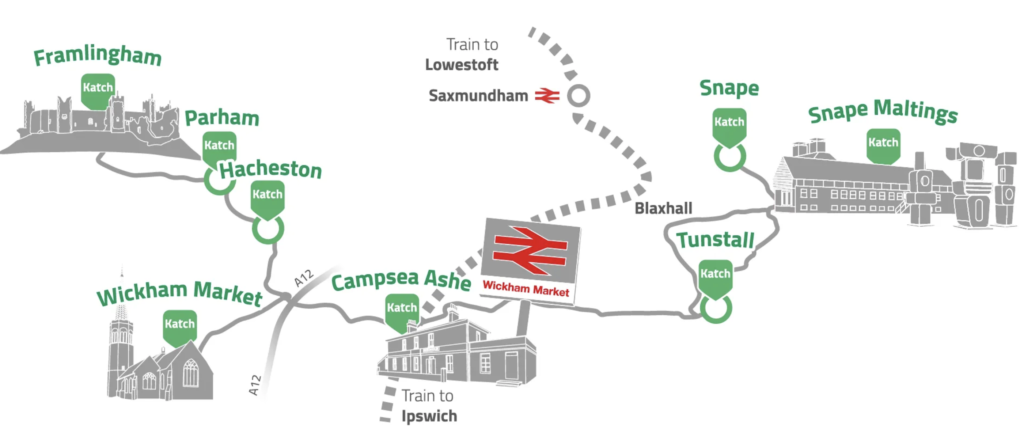Another question that usually comes up when discussing the reinstatement of the Peaks and Dales line, is ‘how will I get to my local station?’ The answer, of course, is the same way you decide how to get anywhere you want to go. Is your destination close enough to walk? Have you got lots of things to carry? What’s the weather doing? If you’ve got a bicycle or a car, you probably think about the route you would take and whether there is somewhere secure to park at your destination. Is there a bus? Will it get you there at the time you need?
For existing train stations in the Peak District, the answer to some of these questions is currently ‘no’. A number of the stations within the Hope Valley on the existing Hope Valley line are relatively far from residential areas. Bus services are improving, but are still sparse. Frustratingly, Grindleford station, which provides the quickest way to get to Sheffield from Bakewell and surrounds, has no bus services which serve commuters. On the Buxton line, Chapel-en-le-Frith station is located at a fair distance from the town centre. When the Peaks and Dales line is fully reinstated some of our stations will resemble these. Millers Dale station is over a big hill from Tideswell. Bakewell station is up a short but steep hill. Great Longstone station is a flat walk from the village, but is not currently served by buses.
What none of these current or future stations have is room for extensive car parks (the only exception perhaps is Edale, which has a large-ish car park nearby, but sadly that is usually filled with the cars of people who should have taken the train to Edale, but didn’t). Anyway, it needs to be possible to get to and from our train stations without a car. People arriving by train don’t have cars tucked under their arms. Visitors coming to stay need to be able to get to their holiday accommodation while day visitors want to start their walk, visit a local attraction, or have something to eat in a local pub or café, all without a car.
There are lots of possible solutions. Bakewell, with its high number of tourists, could merit a regular electric shuttle bus to get people up and down Station Road. Or could we install some sort of cable car system, and give the Heights of Abraham a run for their money? Could there be electric bike hire at Millers Dale so visitors could cycle over the hill to Tideswell? And if all stations in the Peak District had secure bike lockers residents could choose to cycle to the station, safe in the knowledge their bikes would be there when they return. On demand bus services could also play a role. Bakewell and Eyam Community Transport already play a key role in helping local residents without access to a car. The Katch service, in East Suffolk, is an innovative example of marketing a community bus service towards a wider market.

This ‘final mile’ transport is best worked out by the people who know it best. This is where local groups come in. There’s room here to mention only some of the excellent examples of community groups campaigning on transport issues throughout the Peak District. The Chinley and Buxworth Transport Group are campaigning for improvements in all public transport in their area. Hope Valley Climate Action’s Travel and Transport Group is working to improve public transport within the Hope Valley and is establishing local bus user groups. Buxton Town Team are developing a Sustainable Travel Plan. There are two local community rail partnerships which cover stations at either end of the Peaks and Dales line, the High Peak and Hope Valley Community Rail Partnership, which covers the Buxton line as well as the Hope Valley line, and the Derwent Valley Line Community Rail Partnership. There are people working to improve bus services in Matlock and Darley Dale. We, the people living near the stations on the Peak and Dales line, need to get involved in planning how local transport will work when the Peaks and Dale line re-opens.
Don’t ask how you will get to the station – ask how we’ll all get to the station, and join the campaign to get the options we want.

One response to “But wait, how do I get to the station?”
Virtually every station is walkable by the population of each village, the line takes you straight to some of the tourist destinations, ie Matlock Bath,Bakewell, Cromford, but shuttle buses at a cheap fare would help, also would larger carparks, get it reopened, the Peak n local area needs it.